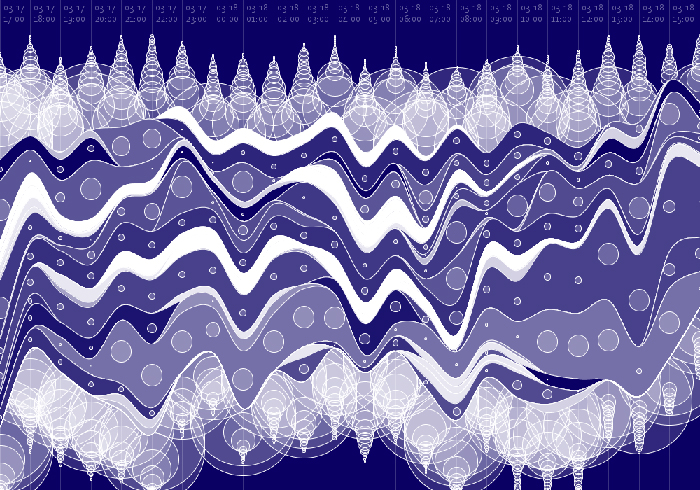A lot of people still have question about how or why web sites like Twitter are valuable. Why would anyone care? I guess the simple answer is that people do care. They care about other people and about random things that is hard for anyone to predict. I may not care about cats but I may care about kittens, which is indeed a cat but not really. So is that it, twitter is important because people talk about things that we care about? No, that is not why. Twitter is important because it is a tool, a tool that we (anyone) can use to figure out what people are talking about, doing, interested in, etc.
With that in mind, lets take a look at some interesting Twitter integration.
I recently saw this awesome example of a twitter search and visualization. Its a literal representation of Clay Shirky’s book titled “Here Comes Everybody: The Power of Organizing Without Organizations”

The web site isparade.jp allows you to see what people are saying in a new context. A cartoon animated world where clusters of people march and display their tweet. So this is a new step of group awareness and the advancement for collective action.
Its not hard to see the value of these technologies once you see them working in front of you. It would be awesome if more companies had these tools. Well maybe we will not have to wait too long. Currently, most major web sites have released their APIs which allows people to use the data and functions that the web tools offer. It allows for companies an organizations to get creative in very unique ways. Lets look at the Grammys for instance. Would Lady Gaga be interested in what people think about her?
Maybe not, but her agent sure does. Not only her agent, but other fans care as well. And who cares about fans more than the agents? Organizations like the Grammys, so let them come up with a nice visualization tool to allow people to see what everyone else thinks about a specific artist. This is a group of people being aware of their collective thoughts, actions, intentions and even feelings. http://wereallfans.com is a venue that allows people to explore what other people think of a specific artist in real time.

As it can be seen from the example above, this information can be very confusing, but beautiful at the same time. So how do we make sense of all this information. The more information we have the more confusing things get. If you have tried to organize a group of people to do something, you may have already found out that each additional group member exponentially increases the complexity of the organization process. So what do you do when you are trying to get data from every single web site that has data available for you to digest? How do you make sense of Google Zeitgeist, Yahoo Buzz, Trend feeds, Twitter, Etc? Your traditional Pie chart or line graph is not enough. You will easily go from a nice little graph:

to something that looks like a barf from a computer:

The goal is not just to show data. It is to visualize data in a comprehensive way. To accomplish this task you come up with tools to sort data for you. Maybe tools like Zoe Fraade-Blanar’s “Current” tool which organizes data into digestible visuals.

You can also use other tools like Circos which looks,
like pac man on < insert drug name here .>

Going back to Twitter; Who really cares about twitter and its potential? People who want to know a little more about everything. The new question is: how are individuals going to be able to digest 4 years of information (twitter was launched in 2006) submitted by the masses?
Soon, we will all be walking data generators and we will have apps that give us summaries of what all our actions meant. This is not too far fetched if you look at projects like Nike Plus. And people have already started looking at ways to visualize life in general like Nicholas Felton who likes to map and visualize the data he collects in his every day life:
